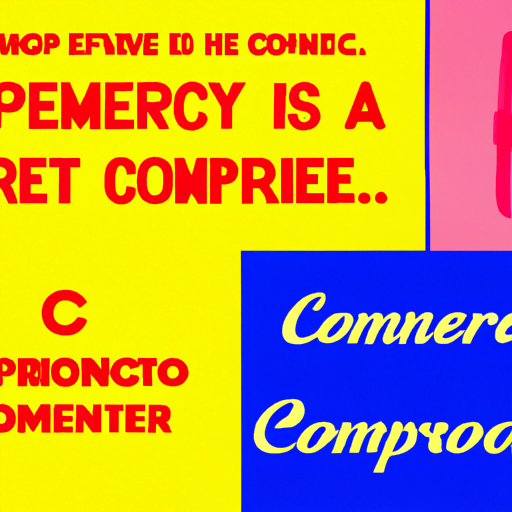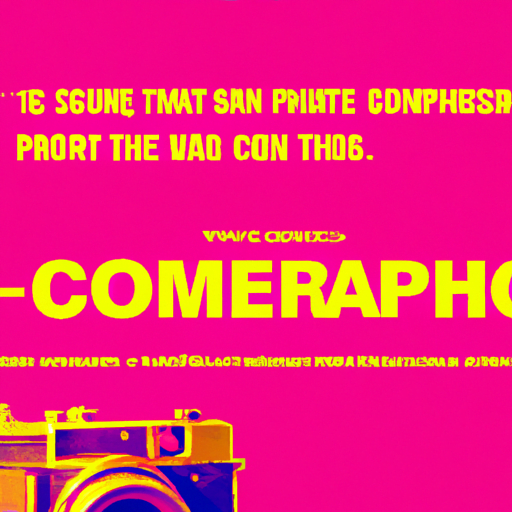
-
Table of Contents
- The Role of Typography in E-commerce Design
- The Psychology of Typography
- Typography Best Practices for E-commerce Design
- 1. Choose the Right Fonts
- 2. Establish a Clear Hierarchy
- 3. Pay Attention to Typography Details
- Case Studies: The Impact of Typography on Conversion Rates
- Case Study 1: Medium
- Case Study 2: Basecamp
- Conclusion
The Role of Typography in E-commerce Design

Typography plays a crucial role in the design of e-commerce websites. It goes beyond just choosing a font and size; it encompasses the arrangement, spacing, and overall visual appeal of the text. In this article, we will explore the importance of typography in e-commerce design and how it can significantly impact user experience, brand perception, and ultimately, conversion rates.
The Psychology of Typography
Typography has a profound psychological impact on users. It can evoke emotions, convey messages, and influence decision-making. Understanding the psychology behind typography is essential for e-commerce designers to create effective and persuasive designs.
1. Legibility and Readability: The primary purpose of typography is to make the text readable. Legible and readable typography ensures that users can easily comprehend the information presented on the website. It reduces cognitive load and enhances the overall user experience.
2. Brand Personality: Typography plays a crucial role in establishing and reinforcing a brand’s personality. Different fonts evoke different emotions and associations. For example, a bold and modern font may convey a sense of innovation and cutting-edge technology, while a handwritten font may evoke a more personal and friendly feel.
3. Hierarchy and Information Architecture: Typography helps in creating a visual hierarchy and organizing information effectively. By using different font sizes, weights, and styles, designers can guide users’ attention to important elements, such as product names, prices, and calls to action. This improves the overall usability of the website and helps users find what they are looking for quickly.
Typography Best Practices for E-commerce Design
Now that we understand the importance of typography in e-commerce design, let’s explore some best practices that can help designers create visually appealing and user-friendly websites.
1. Choose the Right Fonts
The choice of fonts is critical in setting the tone and personality of the brand. It is essential to select fonts that align with the brand’s values and target audience. Here are some considerations when choosing fonts:
- Readability: Prioritize legibility and readability over aesthetics. Avoid overly decorative or complex fonts that may hinder readability.
- Consistency: Use a limited number of fonts consistently throughout the website to maintain a cohesive and professional look.
- Contrast: Create contrast between headings and body text to improve readability and hierarchy.
2. Establish a Clear Hierarchy
Establishing a clear hierarchy is crucial in guiding users’ attention and helping them navigate the website effectively. Here are some tips to establish a clear typographic hierarchy:
- Headings: Use larger and bolder fonts for headings to make them stand out. This helps users quickly scan the page and understand the content structure.
- Body Text: Choose a font size and line spacing that ensures comfortable reading. Avoid long lines of text, as they can be overwhelming and difficult to read.
- Emphasize Key Information: Use different font styles, such as bold or italic, to emphasize important information, such as product features or discounts.
3. Pay Attention to Typography Details
Attention to detail can significantly enhance the overall typography and user experience. Here are some typography details to consider:
- Kerning and Tracking: Adjust the spacing between letters (kerning) and words (tracking) to improve legibility and visual appeal.
- Line Length: Optimize the line length to ensure comfortable reading. Long lines can be tiring to read, while short lines can feel disjointed.
- Whitespace: Use whitespace effectively to improve readability and create a sense of balance and harmony in the design.
Case Studies: The Impact of Typography on Conversion Rates
Typography can have a significant impact on conversion rates. Let’s explore two case studies that demonstrate the power of typography in e-commerce design:
Case Study 1: Medium
Medium, a popular online publishing platform, conducted an A/B test to evaluate the impact of typography on user engagement. They tested two versions of their website: one with a serif font and another with a sans-serif font. The results showed that the version with the sans-serif font had a 7% higher click-through rate and a 13% lower bounce rate. The clean and modern typography improved readability and encouraged users to explore more content.
Case Study 2: Basecamp
Basecamp, a project management software company, redesigned their pricing page by changing the typography. They increased the font size, improved the line spacing, and added more whitespace. The new typography resulted in a 14% increase in sign-ups and a 133% increase in conversions. The improved readability and visual appeal of the typography made it easier for users to understand the pricing information and take action.
Conclusion
Typography plays a vital role in e-commerce design. It influences user experience, brand perception, and conversion rates. By understanding the psychology of typography and following best practices, designers can create visually appealing and user-friendly websites. The choice of fonts, establishment of a clear hierarchy, and attention to typography details can significantly impact the success of an e-commerce website. Case studies have shown that typography changes can lead to substantial improvements in user engagement and conversion rates. Therefore, it is crucial for e-commerce businesses to prioritize typography in their design process to create compelling and persuasive experiences for their users.
